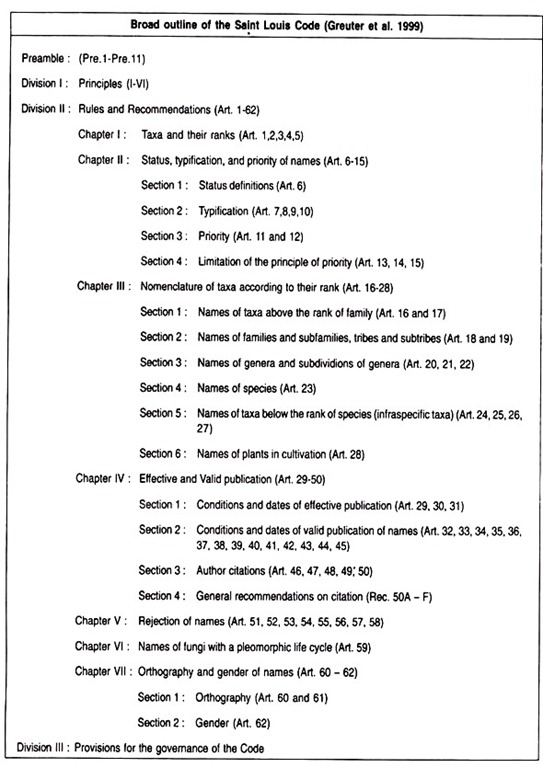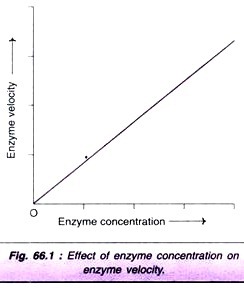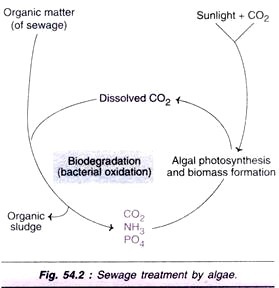Spermatogenesis: Notes on Spermatogenesis!
Mammalian spermatogenesis is a highly synchronized, regular, long and extremely complex process of cellular differentiation by which a spermatogonial “stem-cell” is gradually transformed into a highly differentiated haploid cell ‘Spermatozoon.”
This differentiation involves three distinct classes of germinal cells—the spermatogonia, the spermatocytes, and the spermatids, which usually are arranged in concentric layers in the seminiferous tubules.
In the adult mammals spermatogenesis is a continuous process, which can be divided into two distinct phases and each characterized by specific morphological and biochemical changes of nuclear and cytoplasmic components.
The two phases include:
(i) formation of spermatids (mitosis and meiosis) and
(ii) spermiogenesis.
Contents
Formation of spermatids:
This phase of spermatogenesis is further subdivided into three phases.
1. Multiplication phase:
This phase is also known as proliferation and renewal of spermatogonia. During this phase the diploid spermatogonia which are situated at the periphery of the seminiferous tubule, multiply mitotically to form spermatocytes and also to give rise to new spermatogonia! stem cells and enter the phase of growth.
2. Growth phase:
During this phase, a limited growth of spermatogonia takes place; their volume becomes double and they are now called primary spermatocytes which are still diploid in number. Now these primary spermatocytes enter into the next phase namely, maturation phase.
3. Maturation phase:
The primary spermatocyte enter into the prophase of meiotic or maturation division. Meiotic prophase is a very complex process characterised by an ordered series of chromosal rearrangements which are accompanied by molecular changes. During meiosis, first nuclear DNA duplicates, each homologous chromosome starts pairing (synapsis) and longitudinally spilts up into two chromatids, both of which remain joined by a common centromere.
By chiasma formation mutual exchange of some chromosome material between two non-sister chromatids of each homologous pair (tetrad) occurs (crossing over) to provide an almost indefinite variety of combinations of paternal and maternal genes in any gamete.
Lastly, two chromosomes of each homologous pair (tetrad) migrate towards opposite poles of the primary spermatocyte. Now each pole of primary spermatocyte has haploid set of chromosomes. Each set of chromosome is surrounded by the nuclear membrane developed from the endoplasmic reticulum. The first meiotic division, as a rule, is followed by the division of cytoplasm (cytokinesis) which divides each primary spermatocyte into two haploid, secondary spermatocyte.
Each secondary spermatocyte undergoes second meiotic or maturation division which is a simple mitosis and produces four haploid spermatids. These are non-functional male gametes. To become functional spermatozoa, they have to undergo a complex process of cytological and chemical transformations; a process usually referred to as spermiogenesis.
Spermiogenesis:
The changes in the spermatids leading to the formation of spertmatozoa constitute the process of spermiogenesis. Because a spermatozoon is a very active and mobile cell, in order to provide real mobility to it, all the superfluous materials of the developing spermatozoa are to be discarded and a high degree of specialization takes place in the sperm cell through a number of steps.
During spermiogenesis two major parts of the sperm, the head and tail are formed by the following process.
1. Formation of head:
The two major parts of sperm head i.e. the nucleus and acrosome, undergo the following changes to form a sperm head.
(a) Changes in the nucleus:
During spermiogenesis, the nucleus of spermatid shrinks by losing much of its water from the nuclear cap and the chromosomes become closely packed into a small volume. Whole of ribonucleic acid is eliminated, leaving only the genetic material, the deoxyribonucleo protein. Thus the material, which is not directly concerned with the transformission of hereditary characters, is removed from the nucleus.
The spherical shape of the nucleus also becomes elongated and narrow. This shape is an obvious adaptation for the propulsion in any fluid medium, as well as penetrating the ovum. In different animals, it assumes different shapes which ultimately determine their prospective shapes.
(b) Golgi phase:
The young spermatid is round with a spherical nucleus. The Golgi apparatus secretes glycoprotein rich granules which are stained with the periodic acid-Schiff technique. These granules referred to as proacrosomic granules, fuse to form a single large acrosomal granule attached to the nuclear membrane.
(c) Cap phase:
The acrosomal granule flattens on the nucleus of the spermatid to form the head cap. The Golgi apparatus which secretes the acrosome separates from the head cap and move towards the opposite pole. The Centrioles which are close to the nucleus, on the side opposite the acrosonic cap develop a flagellum.
(d) Acrosome phase:
The definitive morphological contours of the acrosome become clearly defined. The remaining part of the Golgi apparatus is gradually reduced and ultimately discarded from the sperm as “Golgi -rest” along with some cytoplasm (Fig. 6).
In the spermatozoon, the axial body or acrosomal core appears in between the acrosomal granule and nucleus, producing itself from behind into the acrosomal granule. This body develops during its approach to the egg. It contains a few enzymes which are used to dissolve the egg membranes during fertilization process (Colwin and Colwin, 1961).
2. Formation of the tail of the spermatozoon:
The Centrosome of a spermatid after the second meiotic division consists of two Centrioles which have the structure of two cylindrical bodies, lying at right angle to each other. During early stages of sperm metamorphosis, the two Centrioles move to a position just behind the sperm, nucleus in the future neck region. A depression is formed in the posterior surface of the nucleus and one of the two Centrioles becomes placed in the depression with its axis approximately at right angles to the main axis of the spermatozoon.
This is the proximal Centriole and the other centriol i.e. the distal Centriole takes up a position behind the proximal one with its axis coinciding with the longitudinal axis of the spermatozoon. The distal Centriole now give rise to the axis filament of the flagellum of the spermatozoon for which it serves as basal granule.
Most of the mitochondria of spermatids concentrate around the distal Centriole and proximal (upper) part of the axial filament and form the neck and middle piece of the tail of spermatozoon. In the middle piece of the sperm the mitochondria lose their individuality by fusing to a greater or lesser extent. In mammals, the mitochondria join in one continuous body which becomes twisted spirally around the proximal part of the axial filament and the proximal Centriole.
In other animals, however, no spiral arrangement of mitochondria occurs, but instead, mitochondria fuse together to form massive clumps called mitochondrial bodies. The cytoplasm forms a condensed layer called sanchette around the periphery of the middle piece. The manchette also surrounds the posterior part of the head of the spermatozoa, where it is not covered by the cap.
A dark ring called ‘Ring Centriole’ of unknown function is sometimes seen at the posterior end of the middle piece. It forms the boundary between the middle piece and the principal piece of sperm tail. In most animals, except mammals, the principal piece and tail piece of the sperm are composed of the axial filament only. In mammals, the axial filament of the principal piece is accompanied on the outer side by much thicker fibres which are wedge-shaped in cross section.
These fibres start in the middle piece but do not reach upto the end piece of the spermatozoon tail. The fibres of axial filament of a mammalian sperm tail are also surrounded by flattened bands which occur as semi-circular ribs articulating with each other on the opposite sides of the sperm tail (Telkka, Fawcett and Christensen, 1961). The end piece has only axial filament which remains covered with cytoplasm and plasma membrane.
Biochemical Changes in Spermatogensis:
A number of biochemical events occur during spermatogenesis (Monesi, 1970). These are:
(1) The RNA synthesized during meiosis is eliminated from the nucleus during the two meiotic divisions and remains in the cytoplasm. The fully formed spermatozoon does not contain any detectable amounts of RNA. The meiotic RNA is probably associated with the synthesis of acrosomal proteins and flagellum.
(2) Nuclear protein synthesis is arrested in the middle of spermiogenesis.
(3) All of the non-histone proteins in the nucleus are eliminated during spermiogenesis.
(4) All the synthetic events occuring during spermiogenesis are probably regulated by stable RNA produced during the meiotic stages.
(5) The suppression of genetic activity in spermatids and spermatozoa may depend on a regulatory mechanism which causes disappearance of activating proteins and RNA from the chromosomes.
(6) The histone molecules associated with DNA may play a protective role by stablising the DNA against changes occurring in their transport through the male and female reproductive tracts (Taiwan et al, 1989).
Control of Spermatogenesis:
Spermatogenesis is either controlled environmentally or physiologically. Temperature, light, hormones and psychological state play an important role depending upon the organism. Pituitary gland plays an important role in regulating spermatogenesis by secreting certain gonadotrophin hormones. But the pituitary itself and the gonadal activities of birds, rodents, and many other vertebrates are affected by the temperature, light and the length of the day.




